We recommend Nextiva or RingCentral for most businesses because of their comprehensive list of features that cater to virtually any communication need. Save up to 27% on a Nextiva plan, or try RingCentral free for 15 days.
After spending eight weeks researching, testing, and evaluating multiple office phone systems, we narrowed our list to 28 possible contenders. From there, we shortlisted 21 products and eventually narrowed the options to 12 of the best office phone systems for various use cases.
The Top 12 Best Office Phone Systems
Our in-depth methodology brought us to the following list of 12 office phone systems. We recommend Nextiva or RingCentral for their secure, easy-to-use, and feature-rich platforms. Save up to 27% on a Nextiva plan, or save as much as 33% on a RingCentral annual plan.
- Nextiva — Best All-Around
- RingCentral — Best for Hybrid or Remote Work
- Ooma — Easiest Setup for Small Businesses
- Net2Phone — Best for Receptionists
- Grasshopper — Best Lightweight Phone Systems for Solopreneurs
- Phone.com — Most Flexible Plans
- Avaya — Best UCaaS and Contact Center Features
- Zoho Voice — Best for Businesses Immersed in Zoho
- Webex — Best for Scaling Small Businesses
- Zoom — Best for Internal Communications
- Aircall — Best for High-Volume Sales
- Dialpad — Best AI-Assisted VoIP Phone Platform
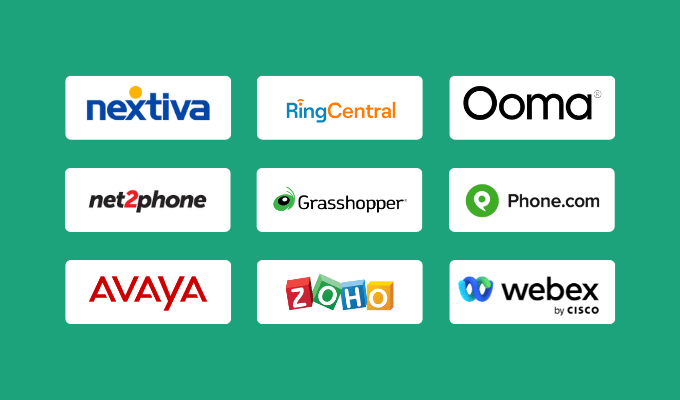
How We Evaluated the Best Office Phone System Companies
We want to help you compare your options as simply as possible. Below, we’ve listed the basic criteria we used to qualify office phone systems and detailed how we ended up with our final choices. Or, jump straight into the reviews if you’re ready to get started.
How We Qualified the Best Office Phone System Providers for Consideration
First, we found 28 brands that fit as overall contenders for the best phone systems for most businesses.
The companies we considered are 11Sight, 1-VoIP, 3CX, 8×8, Aircall, Avaya, Channels, Cloudtalk, Dialpad, Evoice, Freshdesk, Genesys Cloud, GoTo Connect, Grasshopper, Microsoft Teams, Mitel, Net2Phone, Nextiva, Nice CXone, Ooma, Phone.com, RingCentral, Talkdesk, Vonage, Webex, Windstream, Zoho Voice, Zoom.
However, not all of these 28 products made the cut. We immediately removed seven brands, largely because of poor reviews or because they’re geared more toward call center software than office phone systems. The remaining 21 brands moved forward to our second round of research.
How We Narrowed the List of Qualified Best Office Phone Systems
Then, we shortened the list by removing more companies that couldn’t fit these crucial criteria for office phone systems:
- Call management: The best office phone systems typically include various call management features for inbound and outbound calling. We removed companies from our list that didn’t offer at least a few must-haves, like auto-attendants, ring groups, extensions, and anti-spam features.
- Devices vs. apps: Being able to access the office phone system from a laptop or mobile device can increase productivity. Some companies did not offer full-featured apps or apps with high enough ratings for them to be included in our list.
- Implementation and customer support: The process of setting up a phone system, whether cloud-based, on-premise, or hybrid, should be relatively straightforward. Additionally, customer support should be helpful and readily available in case of any hiccups.
- Integrations: The most functional office phone systems connect to your company’s other technologies to keep all systems working smoothly.
- Phone system type: We removed companies from our list that don’t offer many choices in number types, like local and toll-free phone numbers, and other important features, like unlimited calling and simple implementation.
- Pricing: No company wants to pay more than they need to for a phone system. We gave preference to companies with flexible pricing that also provide an array of features for multiple business needs.
- Quality and reliability: Dependability is a priority for an office phone system. Companies without consistent, proven uptime and quality connections did not make our list.
- UCaaS features: Team messaging, faxing, file sharing, and collaborative tools create a well-rounded phone system that boosts communications from all angles.
This cut dropped nine brands out of the running, leaving us with 12 solid products on our top list.
The following companies are qualified but not recommended. They have a lot of features that many businesses find important, but we removed them for not fitting cleanly into our criteria, or for having objectively worse offerings than other brands on the list.
1-VoIP: 1VoIP’s user interface simply isn’t as modern or compelling as others. Although it does a lot of other things well, we understand the benefits an up-to-date interface provides.
3CX: This company’s plans are highly customizable, but because it’s technically a call center software platform, the pricing may be too costly for smaller companies.
8×8: 8×8 is highly comparable to Ooma and Aircall, but it lacks a few features that make these companies stand out.
Cloudtalk: Cloudtalk is designed as call center software, so it’s missing key UCaaS features that assist internal communications.
Evoice: Evoice is probably one of the most stripped-down office phone systems you’ll find. That could be great for solopreneurs, but most companies will need more.
GoTo Connect: GoTo Connect lacks a few important features, like call recording transcriptions and analytics for its entry-level plan. It also offers minimal customer support.
Microsoft Teams: Although Microsoft Teams plays well with other Microsoft tools, companies not as immersed in the Microsoft ecosystem will probably find that it isn’t worth the cost compared to other products that offer more.
Mitel: Mitel’s phone system app feels clunky and outdated. It’s also not as transparent as other companies about its included features.
Vonage: You’ll need to scale up to pricier packages to get Vonage features you’ll find on lower-tier packages with other companies.
The Top Office Phone System Companies Left Standing
We recommend Nextiva or RingCentral for most businesses. Choose your Nextiva plan today. Or, get a 30-day risk-free money-back guarantee when you try RingCentral.
- Nextiva — Best All-Around
- RingCentral — Best for Hybrid or Remote Work
- Ooma — Easiest Setup for Small Businesses
- Net2Phone — Best for Receptionists
- Grasshopper — Best Lightweight Phone Systems for Solopreneurs
- Phone.com — Most Flexible Plans
- Avaya — Best UCaaS and Contact Center Features
- Zoho Voice — Best for Businesses Immersed in Zoho
- Webex — Best for Scaling Small Businesses
- Zoom — Best for Internal Communications
- Aircall — Best for High-Volume Sales
- Dialpad — Best AI-Assisted VoIP Phone Platform
Match Your Scenario to the Right Office Phone System Solution
Now, let’s talk about some of the most common reasons you need a reliable office phone system, which we’ve broken down below. We recommend two excellent options for each situation that could meet your needs.
- You need UCaaS features
- Your company is scaling quickly, and you need an office system that can grow with you
- You need robust outbound calling abilities
- You want a phone system that integrates with your current software
- You need equipment or devices for your team
- Your business has significant inbound calling needs
- You need robust, UI/UX-forward desktop and mobile apps
- You want a phone system that’s easy to implement, maintain, and use
- You have a low call volume and want an affordable phone system
You need UCaaS features
Best Option: Nextiva
Nextiva offers an incredible number of UCaaS features, like video calling, mobile SMS, and faxing, allowing people in the office to communicate with each other as easily as they do customers.
Video conferencing with no call limits and up to 200 participants is an extra productivity bonus for Nextiva customers.
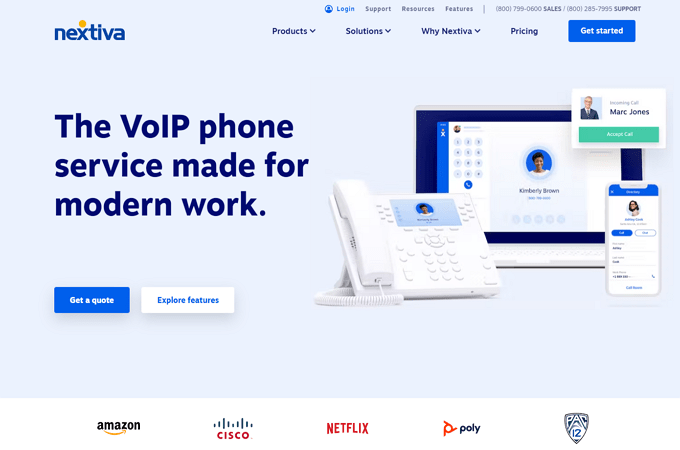
Another great choice: RingCentral
RingCentral is right on par with Nextiva, including virtually all of the same UCaaS features. Unlimited internet faxing and audio conferencing is available on the second-tier plan.
If your phone system will also be a collaborative tool for your team, consider:
- UCaaS features: Systems with video conferencing, team messaging, screen sharing, and other UCaaS features create a connected ecosystem for internal communication.
- Ease of admin: Everyone on the team should be able to use your phone system easily without complex technical training or skills.
Your company is scaling quickly, and you need an office system that can grow with you
Best Option: Nextiva
Nextiva’s vast amount of features might feel like too much for small businesses. However, companies that plan to scale or have already seen promising growth will probably appreciate everything it has to offer.
With an introductory plan that’s incredibly affordable for everything it includes, Nextiva is a smart choice for quickly scaling businesses.
Another great choice: Ooma
Ooma is designed for small to medium-sized businesses, but it will definitely grow with your company’s needs. Its wide range of equipment with advanced calling features makes it easy to pick and choose what you need as you scale.
If you plan to expand your business soon, your phone system probably needs:
- Customizations: Cater your phone system to your customer needs with customization options, like business hours for specific departments or music as they wait on hold.
- Devices and hardware: Expanding businesses may need extra devices and hardware with advanced features. Make sure a company’s equipment works seamlessly with your office software and tools.
- Integrations: Connecting your phone system to tools you already use in your office can boost the productivity of your infrastructure.
- Phone system types: Choose the type of phone system that works best for your company’s needs as it scales, like PBX or cloud-based.
- UCaaS features: Growing businesses may have a higher need for UCaaS features than smaller businesses. Increase productivity with video conferencing, screen-sharing, faxing, and other UCaaS benefits.
- Unlimited calling: Don’t pay more than you need to for calls. Unlimited calling keeps plans more affordable for high-volume calling.
- Implementation options: Consider how challenging it is to set up or expand a phone system, and whether you’ll need to get help from your IT department.
You need robust outbound calling abilities
Best Option: Nextiva
If outbound calling is a priority for your business, you’ll appreciate Nextiva’s click-to-call feature. Connect a call over VoIP with the click of a button using the online phone system to avoid human dialing errors.
Another great choice: Ooma
Ooma gives customers the option of getting scheduled callbacks so they don’t need to wait on hold until someone can get back to them. It also features highly affordable rates for international calls and unlimited domestic calling.
To enhance your company’s outbound communication efforts, consider:
- Call management: Forward or transfer calls to further assist customers, or set up queued callbacks to return customer phone calls promptly.
- International calling: Avoid overspending when you need to reach international customers or vendors. Some products include several countries within their unlimited calling packages, while others offer affordable international calling rates.
- Phone system types: VoIP and PBX systems can work for companies with high call volumes, but VoIP users should be sure to have a reliable internet connection to avoid fuzzy or dropped calls.
- Types of numbers available: Some office phone systems make various types of numbers available, like local and toll-free numbers, which could keep your outbound calling costs down, depending on where you conduct business.
- Unlimited calling: High call volume businesses benefit from unlimited calling without minute restrictions.
- Outbound calling features: Keep the outbound calling team productive with convenient features, like power dialing, preview dialer, and auto dialer.
You want a phone system that integrates with your current software
Best Option: RingCentral
RingCentral has more than 250 integrations with many of the most popular tools that offices use daily. It also allows companies to develop their own apps to customize their workflows and connect their tools.
RingCentral is also ideal for niche businesses with its collections of integrations for specific industries, like healthcare and education.
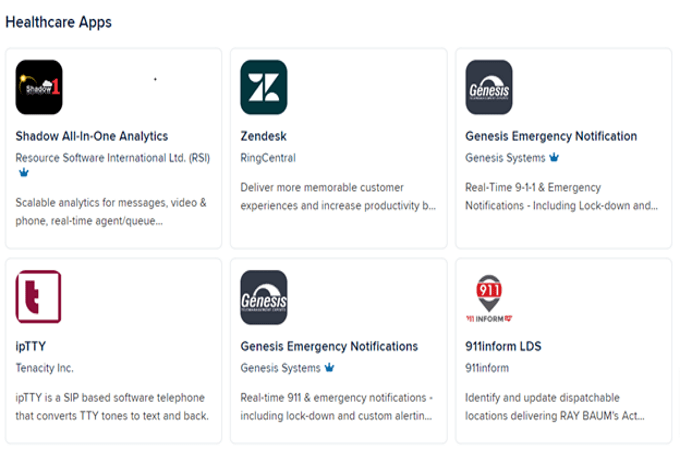
Another great choice: Dialpad
Although its phone system is best for small to medium-sized businesses, Dialpad still includes an impressive selection of apps in its marketplace. They’re organized neatly into categories to find what you need to streamline your processes.
Companies with a large infrastructure of software should consider:
- Integrations: Phone systems that connect to other tools you use with premade integrations can enhance productivity.
- Implementation options: How easily does a phone system connect to your other software?
- Ease of admin: Integrating your phone system with other tools should make processes easier, not complicate them. The best phone systems work well with other software, making the system easy for everyone to use.
You need equipment or devices for your team
Best Option: Webex
Webex is known for carrying some of the most high-tech phone system equipment in the industry, thanks to being owned by Cisco. All Webex devices, including screens, cameras, and headsets, work seamlessly with Cisco software.
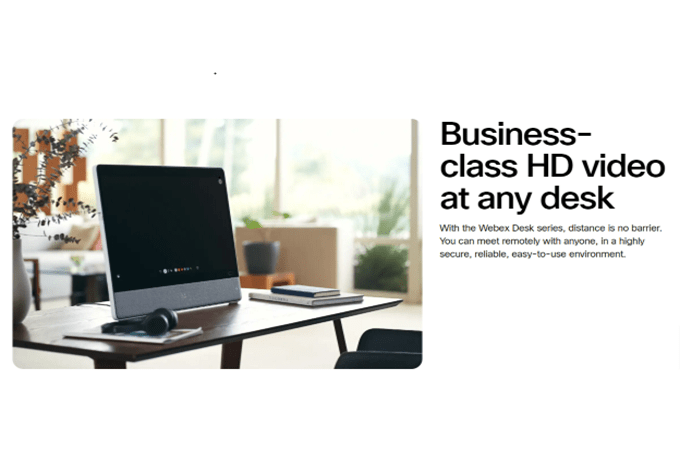
Another great choice: RingCentral
RingCentral does not create proprietary equipment like Webex does in partnership with Cisco. Still, its system plays well with hardware from some of the most popular companies, including Cisco and Unify, and there are plenty of devices to choose from.
When your office needs phones and collaborative equipment, think about:
- Devices and hardware: Does a phone system offer more than just phones, like headsets and smart boards?
- Integrations: Hardware and software can become more cohesive when they’re supported by a phone system with multiple integrations to tools your office uses.
- Extensions: Can your hardware call extension to extension?
- Intercom system: Internal office communications could be improved with an intercom system that automatically answers an extension when staff needs to communicate with one another promptly.
- Phone system types: Some devices are only compatible with specific phone system types, so it’s important to ensure your office phone system works with the devices you already have.
- Quality and reliability: Reliable connections between phone systems and their equipment are necessary to avoid call interruptions.
- Implementation options: Having several devices available is great, but how easy they are to set up and operate determines their helpfulness.
Your business has significant inbound calling needs
Best Option: Ooma
Ooma’s automated call directory and customizable multi-level menus allow customers to easily navigate your phone system.
A virtual receptionist feature takes inbound calling to the next level with an automated guide that assists callers through custom messages, call routing, a dial-by-name directory, and menus for additional languages.
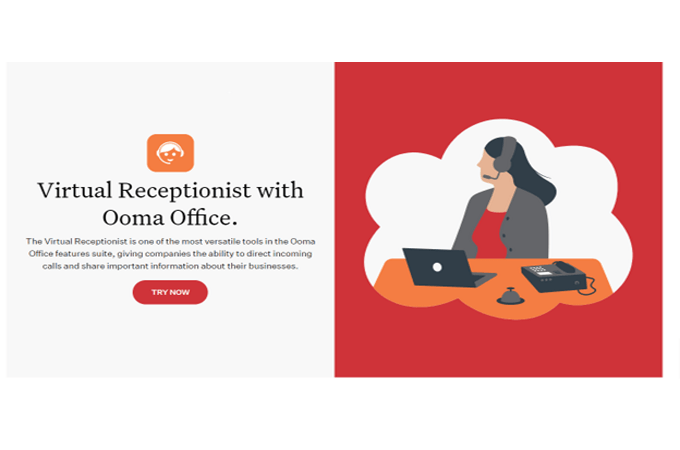
Another great choice: Dialpad
Dialpad is one of the best choices for call management, especially with inbound calls. It includes unique features like simultaneous ring, which sends incoming calls to connected devices, and call transferring to direct incoming calls to the best place.
Businesses with high inbound call volumes should pay attention to:
- Call management: A phone system that provides multiple ways for customers to contact the right people simplifies calling for them and your business.
- Company directory: An automated company directory offers self-help to customers in finding the best person to address their concerns.
- Extensions: How many extensions are available with a phone system to help your company manage calls?
- Intercom system: Let others in the office know about any urgent inbound calls to address using your phone system’s intercom feature.
- Ring groups: Set ring groups for departments or groups of people, allowing phones to ring for everyone in a group for prompt answering.
- Customizations: Having several features available to customize your phone’s menu is priceless.
You need robust, UI/UX-forward desktop and mobile apps
Best Option: Zoom
Zoom has long been one of the simplest phone systems to navigate, offering a clean and straightforward design that virtually anyone can figure out without help. Its video, phone, and chat features work seamlessly across devices, making it an excellent solution for remote teams.
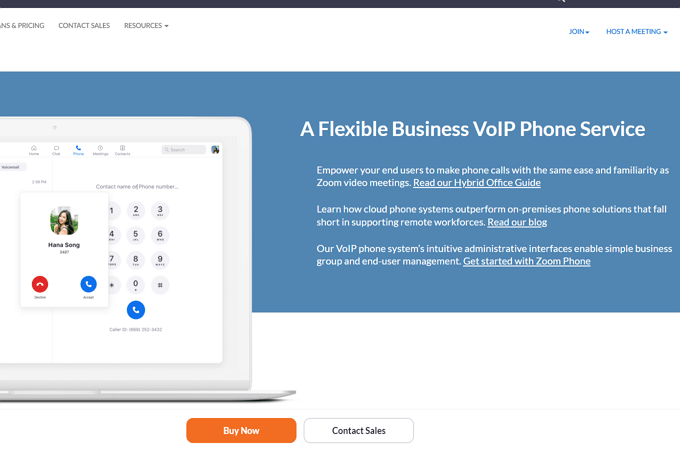
Another great choice: RingCentral
RingCentral has some of the highest-rated apps for mobile devices, and its Mac and PC apps are just as trouble-free to use. You’ll get all the same features on mobile as you would on a desktop, including messaging and faxing.
If your company is mostly remote, consider these features:
- Desktop and mobile apps: What kinds of apps are available for a phone system, and can you switch between them easily?
- Ease of admin: Remote workers shouldn’t need to rely on tech support to get their apps working properly away from the office.
- Quality and reliability: Reliability is key when taking your work on the go. A phone system should keep consistent quality across devices.
You want a phone system that’s easy to implement, maintain, and use
Best Option: Grasshopper
You’d be hard-pressed to find a phone system that’s as easy to use as Grasshopper. This softphone-focused system works entirely through an app, and a guided four-step setup takes only a few minutes to complete.
If you don’t need a lot of bells and whistles in terms of features, Grasshopper is an excellent choice. It’s about as lightweight as you can get.
Another great choice: Net2Phone
Net2Phone also provides quick and easy implementation. Its clean, uncluttered user interface is easy to navigate, and its simplicity carries across to its highly-rated mobile apps.
When simplicity is your priority, consider:
- Ease of admin: If a phone system is easy to set up but not as easy to use, it may not serve you well.
- Quality and reliability: Don’t skimp on quality to get a stripped-down phone system. The best options prioritize quality while keeping things uncomplicated.
- Customer support: Regardless of how simple a phone system is, it should still have an excellent customer support team on hand when problems arise.
You have a low call volume and want an affordable phone system
Best Option: Phone.com
Businesses with occasional calling needs usually don’t need the robust features that top-tier phone systems offer. Phone.com lets you pay more flexibly to get only what you need without wasting money on features you won’t use.
For instance, the company charges per minute rather than offering unlimited calling. Plus, you can give each user a different plan, ensuring those who do the most calling have the necessities.
Another great choice: Zoho Voice
Zoho Voice is the only option on our list with a free plan. Although it’s somewhat restrictive in call management and other features, businesses with low call volumes can make it work.
Even the free plan includes unlimited user-to-user calling, unlimited incoming calls, and 250 minutes per user per month for free.
When you’re willing to trade features for affordability, consider:
- Pricing: Most phone systems, even in their most affordable tiers, include many calling perks for businesses. So if you need only the basics, prioritize pricing in your search.
Best Office Phone System Company Reviews
In the following reviews, we’ve specified what each of the remaining companies does best and what types of business needs it’s most suitable for. While reviewing each phone system, we considered how it met our must-have criteria and fit the most common scenarios for needing an office phone system.
Read our reviews to learn what makes each product unique.
Nextiva – Best All-Around
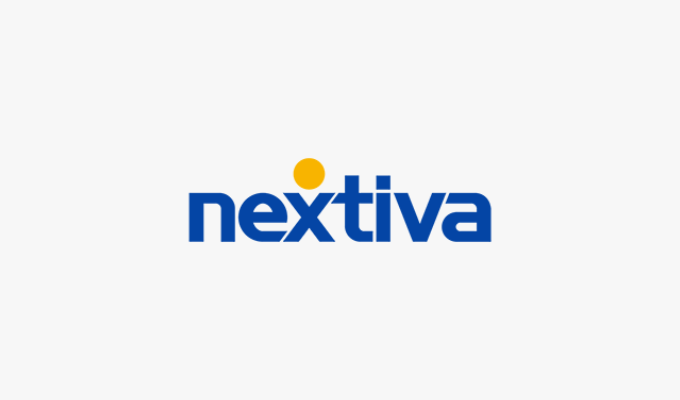
Nextiva may not necessarily be the company for you if you’re a solopreneur, as its vast range of features will probably be too much for you. But small, medium and large businesses alike can likely get everything they need from a Nextiva phone system.
Nextiva’s phone system is completely customizable to your needs, so you can start smaller and scale with features as needed. Several advanced options are waiting for you when you’re ready, like custom call groups, call screening, detailed analytics, and an advanced, AI-powered interactive voice response (IVR) system.
One drawback for smaller businesses that don’t yet need a robust Nextiva plan is that the lower tiers do not include as many popular integrations you might want, like Microsoft Teams and HubSpot.
What Makes Nextiva Great
Despite being completely stacked as far as features go, Nextiva is relatively simple to set up and operate. You can control everything from a clean admin portal, and its guided setup and tutorials walk users through each task and feature.
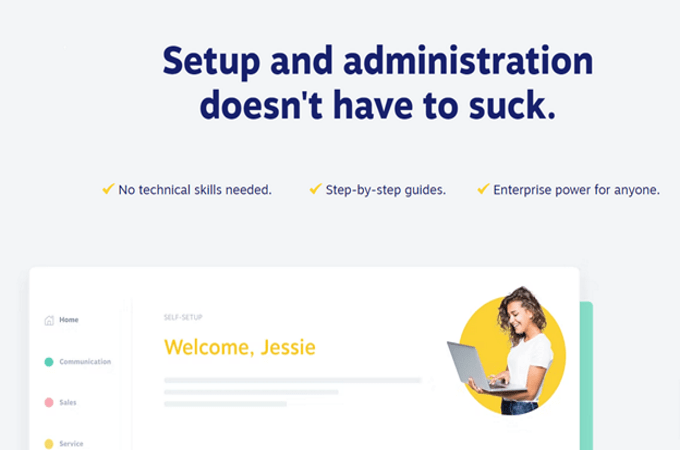
Nextiva also goes beyond the phone system with call analytics that can improve your company’s marketing efforts. Detailed reports let you know where your calls are coming from, like Google ads, and how your conversion rates look.
The more users you have on a Nextiva plan, the lower your pricing per user, making it more affordable for larger teams. Still, with three plans to choose from ranging from $23.99 per user per month to $37.95 per user per month, there’s a good amount of wiggle room to avoid paying for more than what your business needs.
Find out more about everything Nextiva offers in our full Nextiva review.
RingCentral – Best for Hybrid or Remote Work
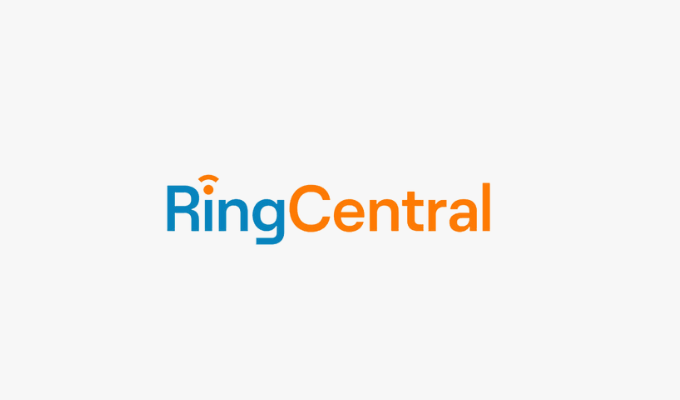
RingCentral is such a close competitor to Nextiva that it’s almost difficult to distinguish the two. However, RingCentral is slightly better for hybrid and remote offices because of its highly-rated, high-performing mobile apps, multiple customer support options, and ease of admin.
RingCentral’s desktop and mobile apps give you all the features you need, whether you’re at a desk or taking a call from your car. You can even control the full admin suite of features from the mobile app.
Customer support is readily available from RingCentral if you run into an issue. You can easily get live phone and chat support, submit a support ticket for non-urgent issues, or get help from the online community.
With that said, like Nextiva, RingCentral probably won’t be your best choice as a freelancer, solopreneur, or small business owner. It simply has more features than you’ll need if you have relatively low call volumes.
What Makes RingCentral Great
Hybrid and remote workers don’t need to feel separated when they’re away from one another. RingCentral’s UCaaS features are among the best, with video calls for up to 200 participants, team messaging, document sharing, and more.

Another bonus for out-of-office workers is RingCentral’s high call reliability. RingCentral uses the Opus Interactive codec for audio and video calls, known for its high-quality streaming audio, regardless of where you’re making and taking calls. Plus, you can always view RingCentral’s quality of service reports to learn more about its performance.
RingCentral provides various plans for businesses to pay only for what they need, and pricing varies by user. Save up to 33% on any plan by paying annually rather than monthly.
Learn more about RingCentral with our in-depth review.
Ooma – Easiest Setup for Small Businesses
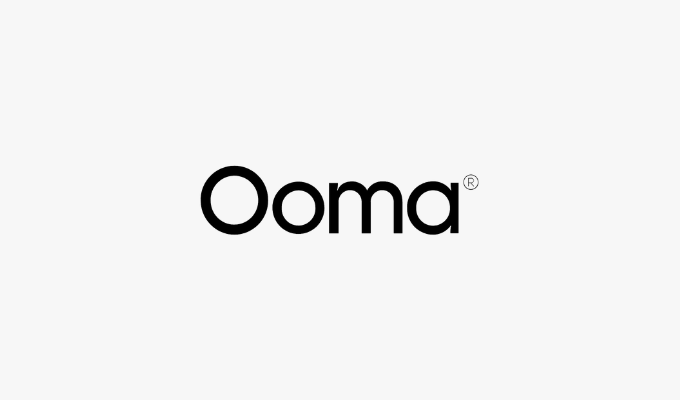
Small businesses don’t always have an IT person or team to rely on when setting up a phone system. Ooma comes to the rescue as our pick for the easiest setup for smaller companies.
Whether you need an app-based cloud system or a network of phones and other devices in your office, Ooma makes it happen easily. The company prioritizes a DIY setup that’s super flexible, letting you choose between a connection to the Ooma Base Station or via ethernet.
Videos on Ooma’s website can walk you through the entire process if needed. However, most small businesses can probably figure out the three-step setup independently, including connecting plug-and-play devices within seconds.
Unfortunately, users of the Essentials plan won’t get access to the desktop app, but the web-based admin portal is just as simple to configure.
What Makes Ooma Great
Ooma’s straightforward setup carries through to its interface. Use the phone system’s array of settings and features, like ring groups, conference rooms, and caller spam detection, with an easy-to-use admin and user panel.
We especially enjoy Ooma’s Virtual Receptionist, with call routing, special messages for various business hours, and dial-by-name extensions that get customers where they need to go. It’s fully configurable using Ooma’s admin panel.

Ooma comes without contracts, so you’re free to cancel or change plans anytime. Three pricing tiers range from $19.95 per user per month to $29.95 per user per month, with the desktop app, voicemail transcription, and video conferencing available on the middle tier.
Discover what other perks Ooma has to offer in our full review.
Net2Phone – Best for Receptionists
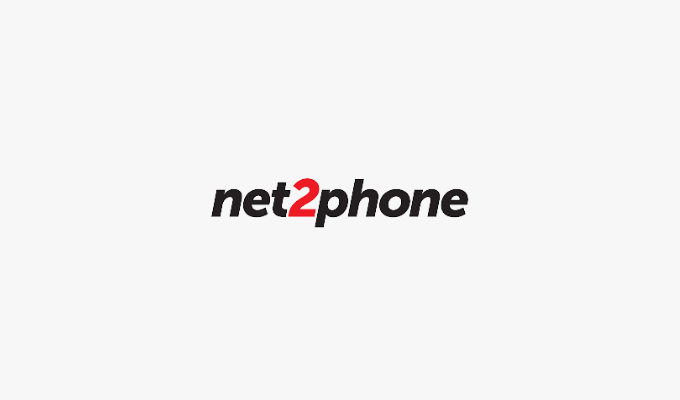
The Net2Phone receptionist console is a feature-rich system with a company directory, intercom system, and multiple call management features. Your in-house receptionist can shave some tasks off their hands with built-in phone system perks, like call screening, call parking, and ring groups.
An auto-attendant also lets your phone system do some of the work for customers by directing them to the right place based on their needs. When receptionists need to take over, they can see the full staff menu and availability on one screen, allowing them to direct calls to the people who can answer them quickly.
Net2Phone is positioned as a middle-of-the-road system. Its most robust calling features are only available with contact center plans that may be too costly for SMBs, while any of its plans might have more than a smaller business needs.
What Makes Net2Phone Great
Net2Phone’s anti-spam features allow call blocking of specific area codes or country codes, or you can block a range of similar numbers, so you won’t have spam calls cluttering up your phone lines.
You can also set up Net2Phone how it makes sense for your company with its user-friendly desktop and mobile apps. The dashboard lets receptionists and other users manage settings, direct calls, and customize the system with easy navigation and implementation.
You’ll be able to view detailed analytics through the dashboard, too. Net2Phone displays information about customers and their calls, such as how long a call took and how many missed calls the company had, in addition to marketing, performance, and call trend details.
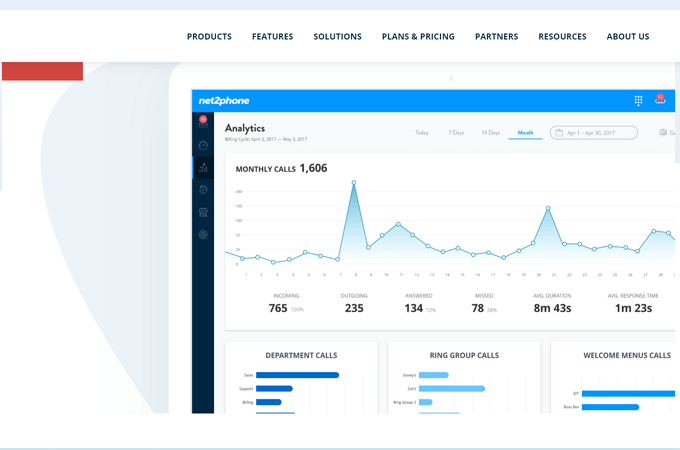
Net2Phone plans range from $24.99 per user per month to $29.99 per user per month. All plans include unlimited domestic calling and unlimited international calling to 40+ countries, plus access to the web and mobile apps.
Talk to the Net2Phone sales team to get a custom quote on your office phone system.
Grasshopper – Best Lightweight Phone System for Solopreneurs
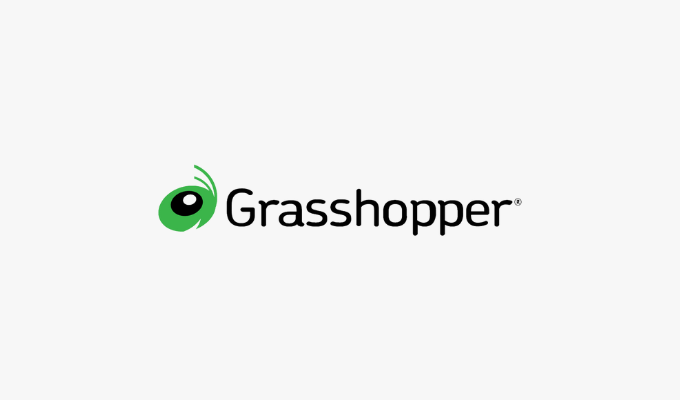
Solopreneurs and freelancers may not technically need a full-powered office phone, but they still might want something that lets them answer business calls separately from their private line. Grasshopper makes that happen with its lightweight system that you can operate solely from your personal device.
Simply add a Grasshopper business number to your mobile phone to transform it into a business line without interfering with personal calls and texts. Users get basic features, like custom greetings, hold music, and unlimited calls and texts.
While Grasshopper may be best for solo business owners, it won’t work as a traditional office phone system. If you need multiple numbers, integrations, and features, you’re better off with one of the more robust systems on our list, like RingCentral or Nextiva.
What Makes Grasshopper Great
Grasshopper may be stripped down compared to other products, but it still offers toll-free, local, and vanity numbers, plus number porting, to get the right amount of professionalism for your business line.
And, because it’s so scaled back, it’s incredibly easy to set up and start using your call system entirely from your phone without help. After signing up, you can immediately tweak custom greetings, extensions, and other settings within minutes.
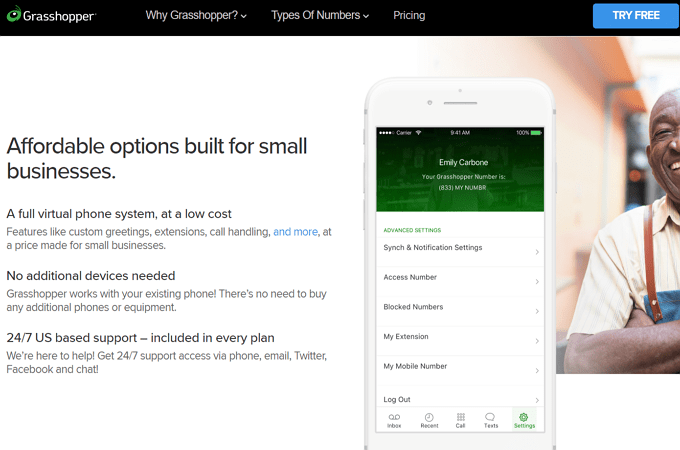
Each plan even comes with 24/7 phone, email, live chat, and social media support, so there’s no need to add a tech support person to your team to help with your phone system.
Save more than 10% on every plan when you pay annually. Each plan adds more phone numbers and extensions to the previous plan, but otherwise, they all offer the same features. Solopreneurs can probably stick with the Solo plan for $28 per month when billed annually.
Read our Grasshopper review to discover what else this lightweight phone system can do for your business.
Phone.com – Most Flexible Plans
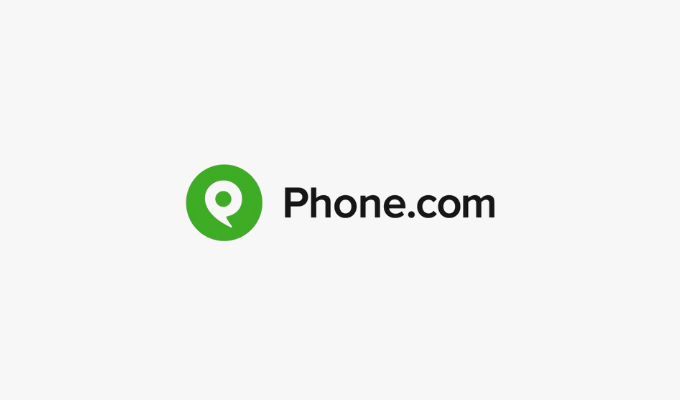
Some businesses need to start small with a budget-friendly plan but prefer a service that lets them upgrade with additional features later. Phone.com offers flexible plans and pricing that can grow with you.
Plans start at just $14.99 per user per month — even cheaper with annual billing — for 500 pooled minutes and video conferencing for up to 10 participants. It’s ideal for very small businesses.
Unlike other office phone systems, Phone.com lets you mix and match the plans for each user. So if some staff members need a basic plan but others need more minutes and features, you can create a custom plan using whatever package you need for each phone user.
Phone.com only includes a standard list of VoIP features that may not suit companies with high call volumes, so keep that in mind as you compare services.
What Makes Phone.com Great
Phone.com’s flexibility is the primary reason you might choose it for your office phone system. However, it also includes some collaborative features, like video recording, video conferencing, and whiteboards, that make it stand out even more.
You’ll also get some helpful call management features, mostly on the middle tier or higher, like call blocking, a dial-by-name directory, hold music, and call routing. Audio calls include HIPAA compliancy for a layer of protection with customers.
Setting up Phone.com is about as easy as it gets. Just sign up for a plan, choose a number, and walk through the settings and admin panel to set up your phone system. Like Grasshopper, you can use Phone.com’s mobile app to turn your personal device into a business phone, too.
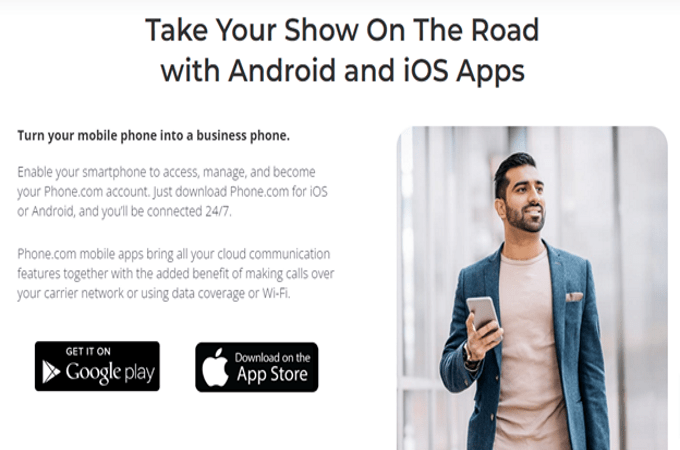
For only a few dollars more per user per month, companies can select the middle-tier Plus plan with unlimited minutes, video recording, and video conferencing with up to 25 participants. This plan is $19.99 per user per month or $15.99 per user per month when billed annually.
Explore Phone.com’s best assets with our detailed review.
Avaya – Best UCaaS and Contact Center Features
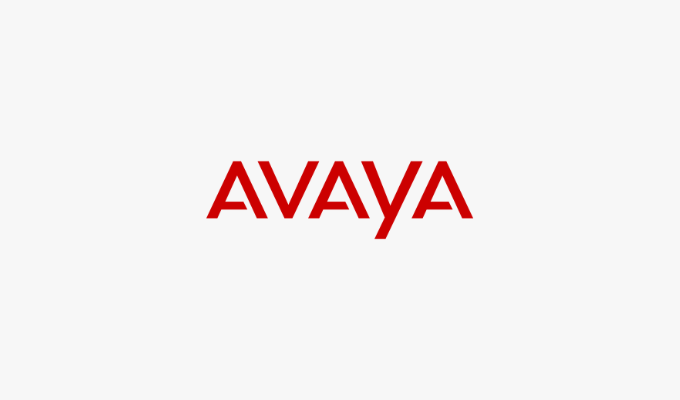
Avaya partners with powerhouse RingCentral to bring the best of both worlds to contact centers that prioritize collaboration. With Avaya’s plug-and-play phones and other office-focused devices and RingCentral’s UCaaS features, the Avaya phone system offers a broad range of benefits for high call volumes.
Some of its most significant benefits lie in its AI-powered features, like voice and face biometrics, call coaching, background noise removal, and predictive analytics. There are also virtual agents with speech-to-text analytics, intelligent call routing, and answers to questions to help save operators time.
Ease of admin and simple implementation, thanks to devices with a straightforward setup and an easy-to-navigate control panel, take Avaya over the edge as an excellent option for contact centers and large businesses.
Unfortunately, pricing for an Avaya system isn’t as transparent as it is with other companies, so you’ll need to spend some time with the sales team to get all the information you need.
What Makes Avaya Great
Avaya has all the features you need to run a call or contact center from anywhere. You can control most of Avaya’s phone system from your Apple or Android device using its full-featured mobile apps. Or, hop on video conferences with a web-based app available globally for anyone to join in easily.
This, in addition to Avaya’s ease of use, 100+ integrations, and A+ customer support, make it one for remote and hybrid teams to consider. Teams also get team messaging, file sharing, and unlimited SMS to keep in touch and stay productive. As a result, everyone can feel connected regardless of where they’re working that day.
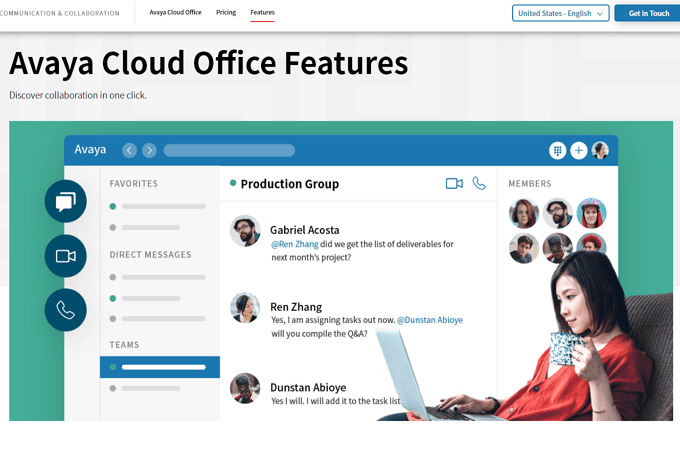
If you’re only using Avaya’s cloud-based office solution, you can find its pricing on the website to get an idea of what you’ll pay. Packages range between $22.99-$42.99 per user per month when billed annually, but you’ll still need to talk to sales to understand exactly what you’re getting or to sign up.
Save up to 13% on an Avaya Cloud Office plan when you choose annual billing.
Zoho Voice – Best for Businesses Immersed in Zoho
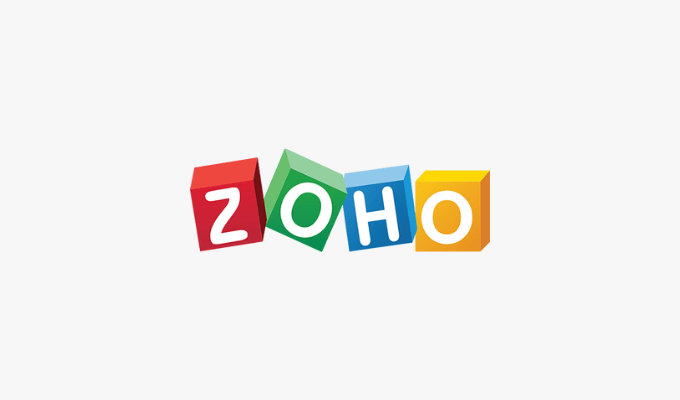
If your business is already deep in the Zoho pool of products, then Zoho Voice is likely your best option. Zoho Voice is a middle-of-the-road option with a good mix of features and average performance. But if you already use tools like Zoho CRM or Zoho Workplace, you’ll find that everything in the Zoho atmosphere works well together.
It’s also quite affordable for smaller businesses, which is what Zoho typically caters to. There’s a free Solo plan with unlimited free calling between users, but even its paid plans begin at just $10 per user per month. Add-ons are available including additional users, power dialer, and queue performance analytics.
If advanced features are more important than affordability, you’re probably better off with one of the more robust options in this guide. Zoho Voice lacks AI-powered features, hardware connectivity, and advanced UCaaS features that larger businesses tend to need.
What Makes Zoho Voice Great
Get all the standard calling features you’d expect from an office phone system with Zoho Voice. The cloud-based system includes call categories, business hour rules, IVR in 16 languages, and direct extensions calling. Call listening and whispering keep your team on the same page through consistent monitoring and training.
All plans also provide unlimited calling between users and unlimited incoming calls, even from international numbers. And you can make and receive any call using Zoho Voice mobile or desktop apps.
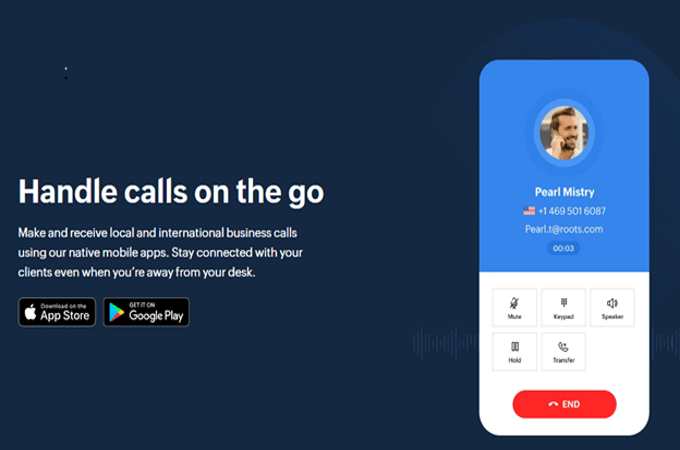
Zoho Voice stands out with customer support, too. Although phone support is only offered to those on a paid plan, anyone can reach out to the community forums for extra assistance or browse the knowledge base for self-help. Email and form-based support tickets are also available with quick response times.
Solopreneurs and businesses needing to connect just a few users without high call volumes can start with a Solo plan for free to see if Zoho Voice is right for them. Or, try Zoho Voice free for 15 days, no credit card required.
Webex – Best for Scaling Small Businesses
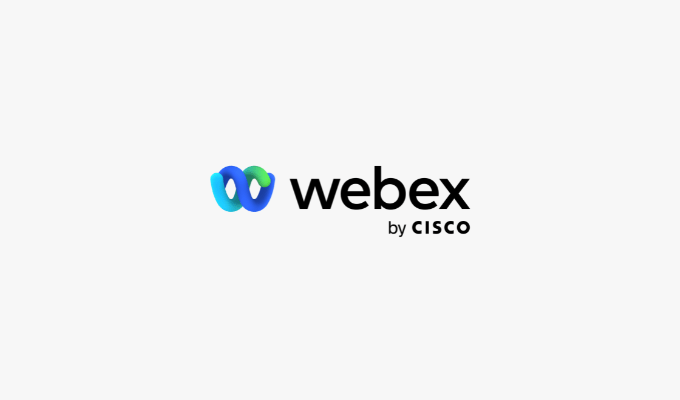
Businesses often start small while planning for a larger future. At first, affordability and minimalism are key. Webex offers a lot of phone system options at small-business prices while leaving plenty of space for growth in the future.
Webex is a child company of tech-forward Cisco, which is known for its high-quality and feature-rich communications equipment. When small businesses experience growth and, therefore, higher call volumes, Webex’s office phones, video bars, headsets, and other devices can meet their calling needs.
Low-tier plans have what small and medium-sized businesses need, like anti-spam features, analytics, and desktop and mobile apps, while high-tier plans reserve more advanced features for larger enterprises.
What Makes Webex Great
Webex has great customization options, which can help a lot when planning to scale. You can give your phone system a cohesive look with Webex’s unique customization options for the admin panel. Later, you can add customized support links, company logos, and brand colors, a feature you won’t find on many other phone systems.
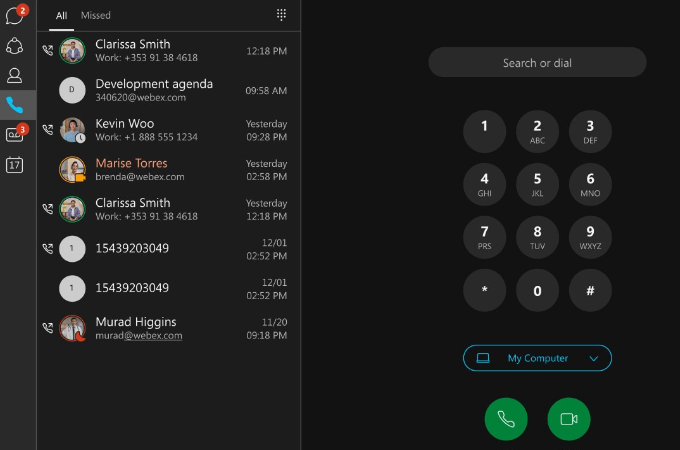
Webex lets SMBs escalate calls to video calls to take advantage of its call recording features and meeting features, like transcriptions, screen sharing, and whiteboarding. When you’ve grown enough to need more, move to the Enterprise plan for group paging, call barging, and FedRAMP-authorized security.
The Basic Webex plan is free, but it’s mostly for simple video messaging. Calling plans start at $25 per user per month for premium meetings with up to 200 participants, screen sharing, call forwarding, and extensions.
Is Webex right for you? Read our in-depth Webex review to decide.
Zoom – Best for Internal Communications
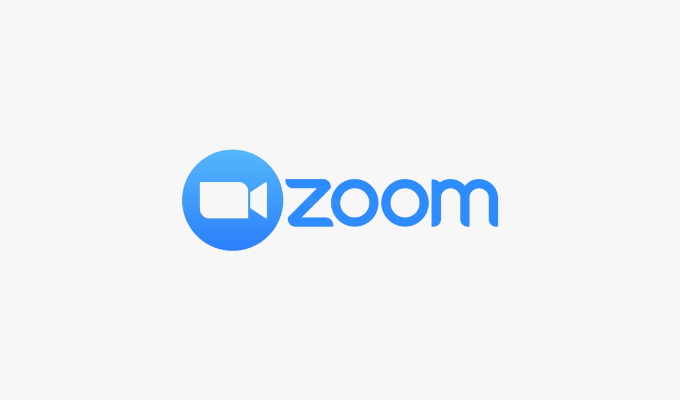
Zoom has dominated web conferencing for a few years now, but it’s also a top contender for an office phone system, especially when it comes to internal communications. Use Zoom as an intercom or paging system to communicate without dialing, for extension-to-extension calling, or for video and team messaging, depending on your plan.
Zoom also simplifies training and monitoring with on-demand or always-on recording, call transcription, and a playback feature that helps you find specific parts of a conversation. Trainers can also barge or whisper in phone calls to provide assistance during calls.
With highly rated and easy-to-use mobile and desktop apps, Zoom creates simple connections from anywhere inside and outside the office, which is a bonus for hybrid and remote teams.
What Makes Zoom Great
Zoom prioritizes communications, especially among teams. Therefore, most of its add-ons cater to teams, like its premier support, audio conferencing for international countries, and unlimited concurrently editable whiteboards.
With the Zoom Phone Power Pack, teams get SMS, in-depth analytics, and a call handling panel for receptionists to manage large call volumes.
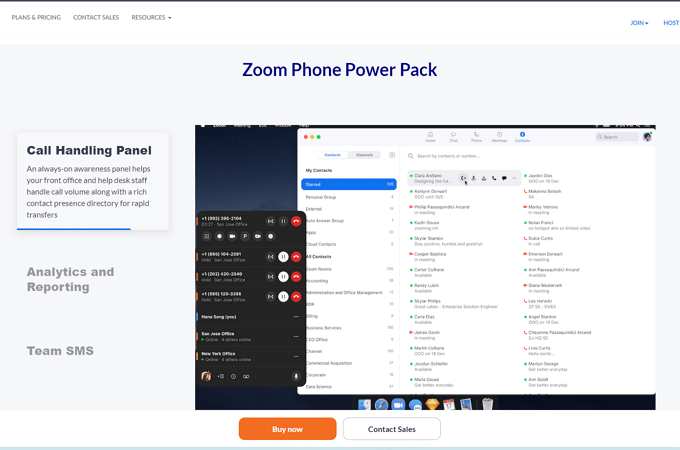
Still, it also has advantages for outbound calling. Favoriting and searching contacts is possible via the app, and all users get unlimited calls within the United States and Canada. Agents can transfer or block calls, switch between apps during calls, and customize the phone system with different greetings during specific times.
Zoom One includes Zoom Meetings, Chat, Phone, and other helpful tools. Paid plans start at $149/user/year for team chat, meetings with up to 100 participants, and 5 GB of cloud storage.
Explore Zoom’s benefits for collaborative teams in our full review.
Aircall – Best for High-Volume Sales
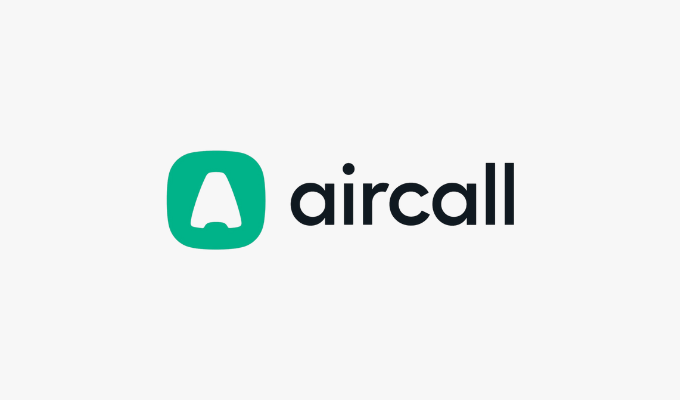
The array of inbound and outbound calling features available from Aircall makes it suitable for high-volume sales or support teams. Technically a call center software, Aircall is made to manage a large number of calls while still being efficient and straightforward to use.
Admins can build call paths and IVR menus right from the phone system’s console. Detailed analytics let teams learn more about calls and how well they’re meeting their phone sales goals.
Aircall’s shared inbox lets all phone system users see details about calls and their moves down the pipeline, allowing everyone to track the team’s progress toward closing deals or meeting customers’ needs.
The downside? To get many necessary features for large sales teams, like power dialer and call monitoring, you’ll need the middle-tier plan for $70 per user per month, a pricier option than others on our list.
What Makes Aircall Great
Aircall can work for businesses of all sizes. Numbers are available in more than 100 countries to get set up in whatever location you need. As your business grows, easily add more numbers or move to a different plan for more advanced features.
Aircall boosts productivity with call assigning, tool integrations, ring groups, and conference calls on any plan. Over 100 integrations with CRM, chat tools, billing systems, and other software keep teams working with the tools they use most.
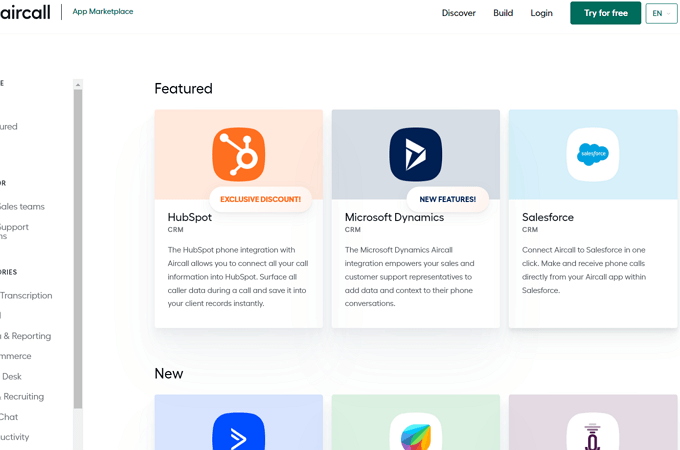
Sales teams can also rely on Aircall’s technologies to provide quality, reliable calls. Aircall boasts 99.99% uptime using the Opus codec to prevent interference and dropped calls. A detailed onboarding process also ensures that a phone system has all the right connections and the most optimized setup for success.
Save up to 29% on any plan when you pay annually, with pricing starting at $30 per user per month. You can also get a free trial of any Aircall plan for seven days.
Dialpad – Best AI-Assisted VoIP Phone Platform
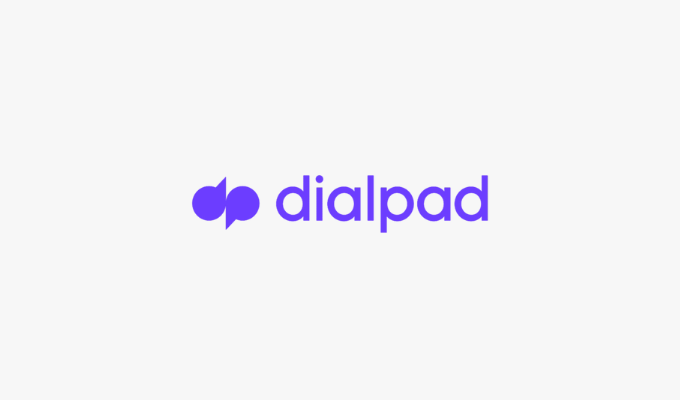
Few phone systems do artificial intelligence as well as Dialpad. In fact, its AI-assisted technologies perform almost as if another person was on your team to help operate your phone system.
All Dialpad phone systems include in-depth AI-based reporting broken down into handy charts and visuals. See everything from agent-by-agent performance to call volume pattern heatmaps. Reports also use AI to track keywords to track calls.
Dialpad also uses its technology to transcribe calls with impressive accuracy, becoming even more accurate the more your company uses it.
Other AI-powered features target call monitoring to improve customer service and support team performance. Dialpad tracks call sentiments to gauge the mood of the call and alert someone to assist if needed. Agents can also get AI-assisted cards for live coaching when the system detects specific keywords.
What Makes Dialpad Great
Supervisors can also monitor calls with the help of Dialpad’s AI assistance. When the AI system detects a keyword or phrase that triggers an alert, a supervisor can read the call’s transcript before deciding whether to jump in and help.
Dialpad excels in security and compliance, too. It’s out-of-the-box compliant with HIPAA, GDPR, and SOC2® Type II. Plus, enterprise-level AES 256-bit encryption on the Google Cloud Platform secures calls over the VoIP network.
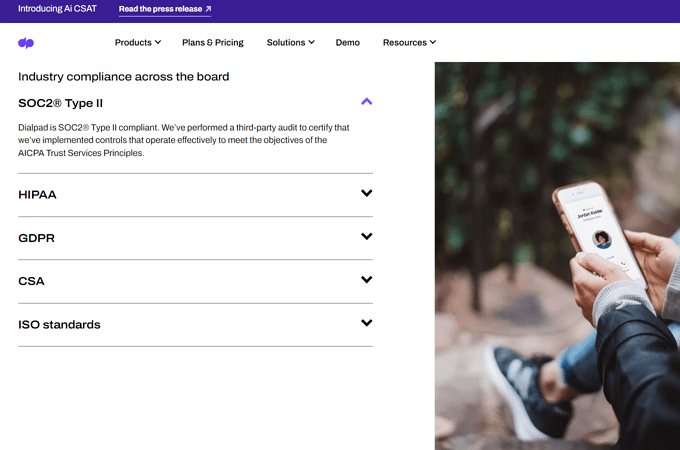
Dialpad plans start at a comparable $15 per user per month when billed annually. Get a free 14-day trial of the Standard or Pro tiers to test it out.
Learn how Dialpad helps teams communicate in our Dialpad Meetings review.
Quick Sprout Office Phone System Related Content
There’s a lot of information to consider regarding types of phone systems and what solutions are right for your business. Here, we include several additional resources to read as you decide.
No comments:
Post a Comment